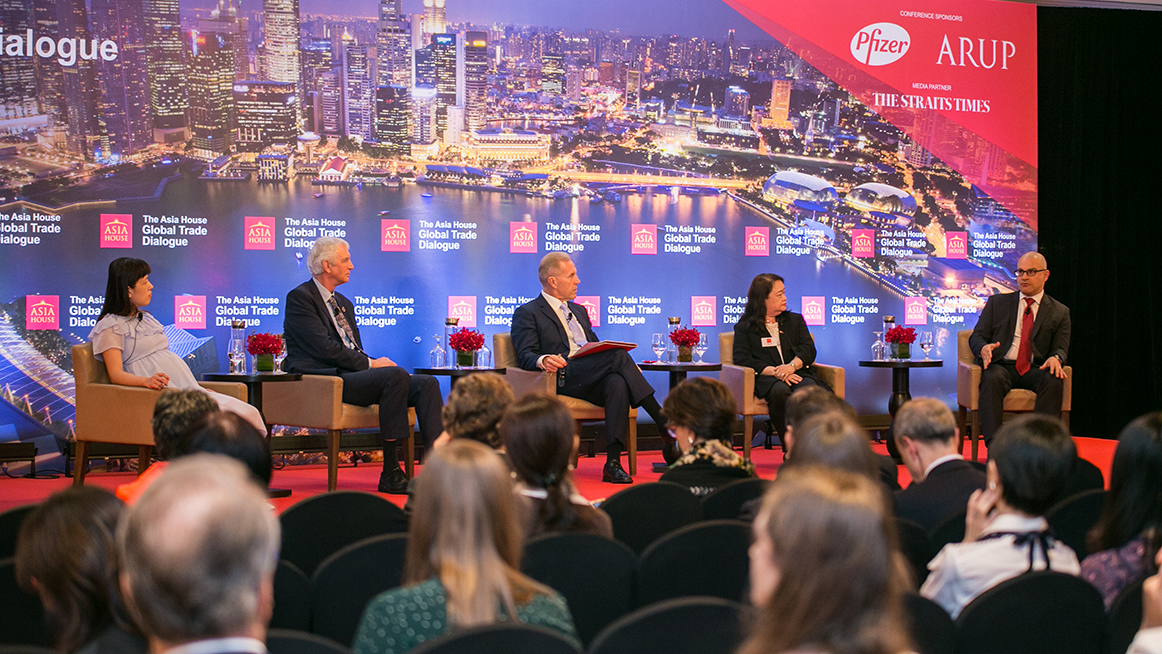Driving commercial and political engagement between Asia, the Middle East and Europe
Driving commercial and political engagement between Asia, the Middle East and Europe
Driving commercial and political engagement between Asia, the Middle East and Europe

Asia is urbanising rapidly, with 350 million more people expected to be living in its cities by 2035. This trend will place pressure on current infrastructure and bring fresh challenges for city planners and policymakers – from issues around sustainability to the task of attracting talent.
Future cities were therefore a key talking point at The Asia House Global Trade Dialogue in Singapore, which put the issues driving change across Asia in the spotlight.
Perhaps the biggest challenge relates to the environmental impact of urbanisation and the increasing threat of climate change.
For Peter Chamley, Chair, Arup Australasia, a focus should be on resilience. He said cities should plan on the understanding that extreme weather events will happen, and ensure integrated systems are in place to enable water, power and food supplies to be restored quickly.
“Cities working hard to build up their resilience is the key to dealing with climate change,” he said. “Rather than thinking “how we are going to resist it”, we should think how we can work with it to get back on our feet.”
Having a vision which drives all areas of planning is also key to meeting emerging urban challenges, Yasser Helmy, Head of Smart and Connected Communities, Asia Pacific, Cisco, opined.
“When Copenhagen announced that it’s going to be carbon neutral by 2025, that was the vision,” he said. “It translates to that vision being baked-in to every department in the city.
“So if they’re in the roads department and are building a new road, they’ll always benchmark against whether it contributes to the goal or takes them a step back.”
Technology will, of course, be integral to the cities of the future. Its role in urban infrastructure has already given rise to the phrase ‘smart cities’, and emerging tech is being embraced by planners across the region.
One example was offered by Aileen Zosa, Executive Vice President of the Bases Conversion and Development Authority, The Philippines, who shared details of Artificial Intelligence and facial recognition being integrated into New Clarke City.
“Facial recognition is vital for a special economic zone, for safety,” she said. “We are opening-up a new terminal building in Clarke airport, and technology can be harnessed to enhance safety and protection.”
While there is controversy around facial recognition, as Michael Lawrence, Chief Executive of Asia House and conference chair pointed out, it was a compelling example of how digital technologies are likely to shape the future urban experience.
“We envisage our city of the future to have very good security, very efficient utilities and [better] quality of life of citizens,” Zosa said.
Looking ahead, Alibaba Cloud’s Senior Product Lead, Jessie Yu, shared her insights on “the next phase of the smart city,” highlighting a strategic partnership with the Singapore Board of Tourism aimed at bringing physical infrastructure into the digital space and enabling global payments.
“In our perspective, this is the next phase of the smart city. It’s about people. It’s beyond the traditional theme of traffic – it’s about how we can help people collaborate with the rest of the world.”
WATCH the full Future Cities session from The Asia House Global Trade Dialogue at Asia House TV
